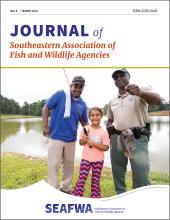Feasibility of Initiating a Commercial Fishery for Paddlefish in Alabama Reservoirs of the Tennessee River
In recent years, commercial paddlefish harvesters have renewed their requests for opening a potential commercial paddlefish (Polyodon spathula) season in Alabama reservoirs of the Tennessee River, including part of Pickwick Reservoir, all of Wilson and Wheeler reservoirs, and the majority of Guntersville Reservoir. These reservoirs of the Tennessee River once supported robust stocks of paddlefish; however, beginning in the 1940s overexploitation became evident as the number of paddlefish harvested declined. Because of this widespread overharvest, a commercial and recreational...
